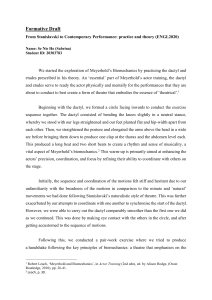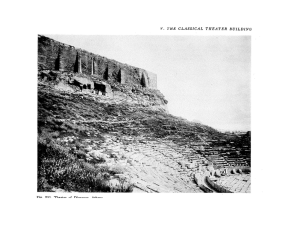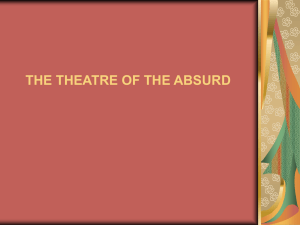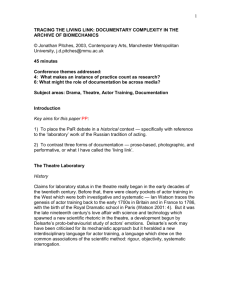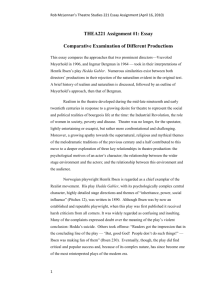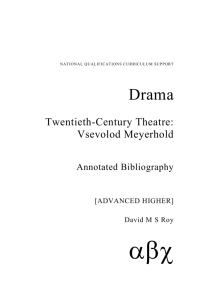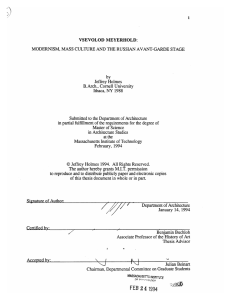File
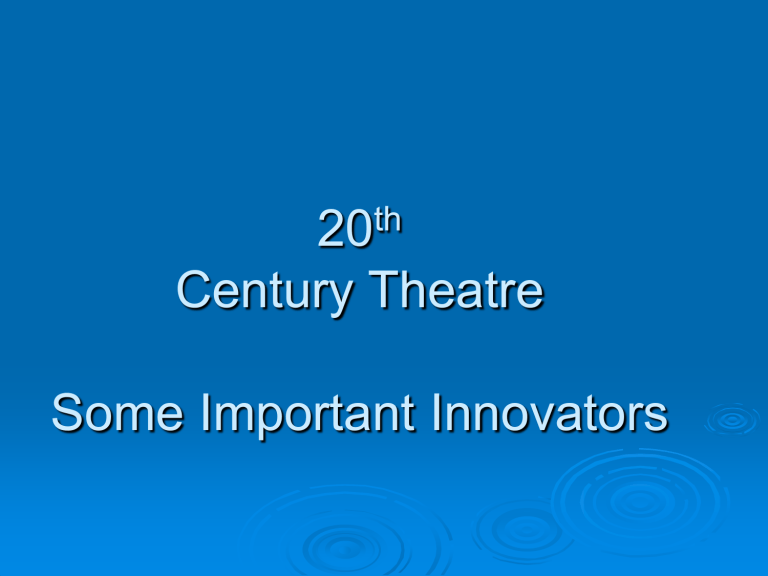
20
th
Century Theatre
Some Important Innovators
As Modern Theatre opened up to the influences of non-realistic movements such as Symbolism and Expressionism, as well as the demands of staging works of
Realism, there was a need for change in the area of acting style, stage design and directing.
Many individuals made valuable contributions that both shaped the theatre and influenced others
The innovators listed are just a few of those people:
-Appia
-Craig
-Reinhardt
-Meyerhold
Adolphe Appia
1862 – 1928
Born in Switzerland
He sought to unify the stage elements such as set and lighting
He wanted to create a harmony that would better serve the play being performed
Problems
He didn’t always achieve harmony and unity on stage
Many plays were spoilt the clashing elements and flat scenery and floors which did nothing to enhance the actor on stage
To ‘blend’ such elements together he introduced differing heights on stage, ie. small platforms and blocks, which opened up the stage
Lighting
Appia used the newer, better lights available due to advances in technology
He lit the stage from different angles, creating many special effects and moods
He set high standards that inspired directors and designers
Adolphe Appia
Appia’s stage designs
Gordon Craig
1872 – 1966
An English actor
He elevated the status of the director as someone whose vision should be created on stage
He favoured simplicity
He believed all aspects of theatre should work together to manifest this ‘vision’
Stagecraft
Craig moved away from the use of naturalistic sets
He worked with the abstract and symbolic, creating stunning and original designs and effects
Every bit of space, and what filled it (or did not fill it) mattered and was used to carry his concepts
Craig emphasised the visual aspects of theatre to create the marriage of the play
Everything was united and important in
Craig’s theatre
Gordon Craig
Craig’s Set Designs
Max Reinhardt
1872 -1943
German director
Further developed the role of the director
He studied past theatrical traditions to learn from their staging of plays
If an historical play was staged, Reinhardt introduced the importance of recreating elements from that time
This was different because in the past very little attention was given to theatrical history
Reinhardt believed the director was free to choose and combine any elements in staging a play in the best possible way
Max Reinhardt
The immense set for the 1939 Max Reinhardt production of Faust . The houses were some 35 feet high, and the windows, doors, and stairways were functional. Much of the action took place in the rooms of the buildings, to be glimpsed through doors and windows by the audience
Vsevolod Meyerhold
1874 – 1940
Meyerhold began his career at The
Moscow Art Theatre
He worked with the famous director-actor,
Stanislavski
Meyerhold left after disagreeing with the
Company’s ideas
Stanislavski emphasised creating the appearance of reality
Meyerhold disagreed believing instead in theatre for theatre’s sake
The audience did not need to be fooled that they were anywhere else other than a theatre
Meyerhold’s Ideas
No curtains
Extending the stage into the auditorium
Fully lighting the auditorium
The key factor was the actor
Sets, costumes and words were not essential
Biomechanics
Meyerhold’s interest in human movement led him to develop ‘Biomechanics’
Biomechanics was a detailed form of physically training actors that enhanced focus
Vsevolod Meyerhold
Meyerhold’s Biomechanics
Meyerhold’s Productions
These innovative theatre practitioners had a great effect on theatre in the later 20 th and early 21 st century.
